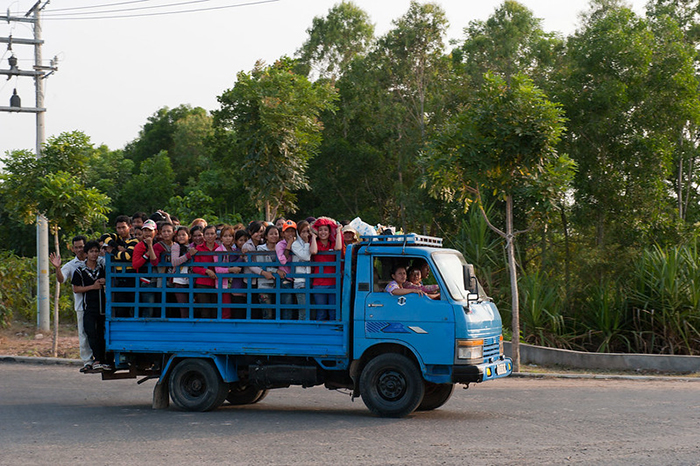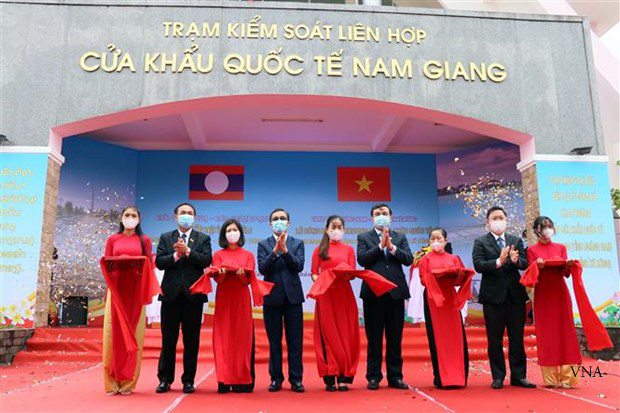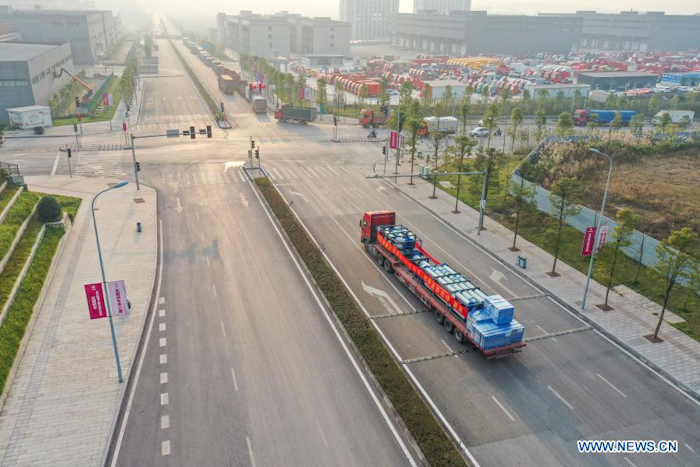
Workers take a ride on a truck after their shift at a factory in Cambodia. Photo by ADB.
$82 Million ADB Loan to Improve Cambodian Roads, Support GMS Economic Corridors
The Asian Development Bank (ADB) has approved an $82 million loan to improve about 48 kilometers of national and provincial roads in Prey Veng and Kandal to boost economic development along the Greater Mekong Subregion (GMS) Southern Economic Corridor.









